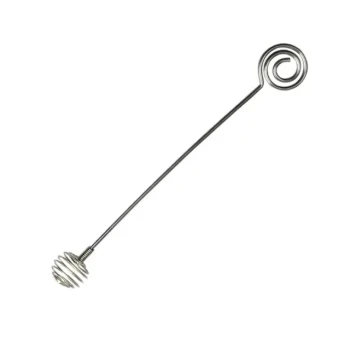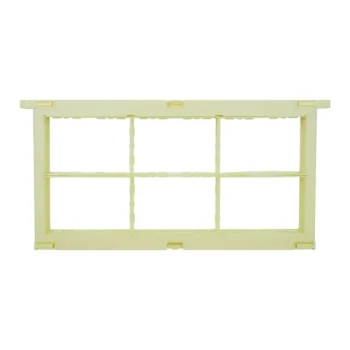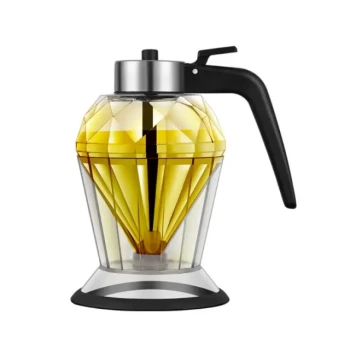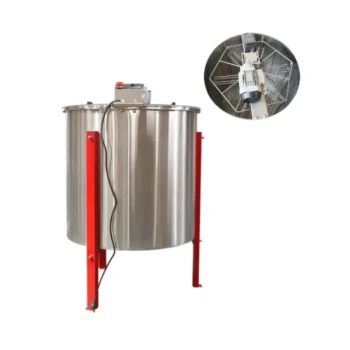The two primary factors that damage honey during storage are heat and moisture. These elements degrade the honey's delicate flavor, aroma, and beneficial properties. Proper storage involves keeping it at a stable room temperature in a tightly sealed, airtight container, away from direct sunlight and sources of heat.
Honey is a remarkably stable food, capable of lasting for years, but its quality is not invincible. The core challenge is preventing the degradation caused by heat, which breaks down its enzymes, and moisture, which can trigger fermentation.
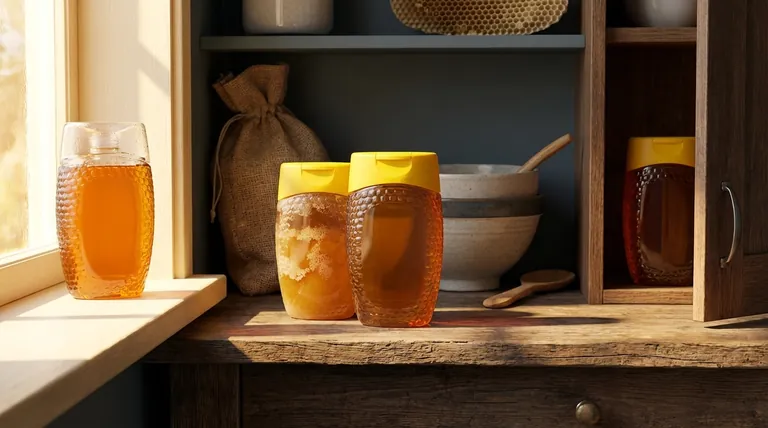
The Primary Threat: Heat and Light
Exposing honey to heat is the fastest way to degrade its quality. This damage is irreversible and affects its composition, color, and aroma.
Why Heat Is So Damaging
Heat accelerates chemical reactions within the honey. This process breaks down the natural enzymes and vitamins that contribute to its unique properties. It can also cause the honey to darken and alter its flavor profile, often resulting in a caramel-like, less nuanced taste.
The Impact of Sunlight
Direct sunlight is a significant source of heat. Leaving a jar of honey on a sunny windowsill will warm it considerably, leading to the same degradation caused by storing it near a stove or other heat-producing appliance.
Ideal Storage Temperature
The best environment for honey is a cool, dark, and dry place. Stable room temperature is the universally accepted standard. Avoid drastic temperature fluctuations, which can also affect its texture and accelerate quality loss.
The Secondary Threat: Moisture Contamination
Honey is hygroscopic, meaning it naturally absorbs moisture from its surroundings. This is a critical characteristic to manage for proper storage.
The Risk of Fermentation
Honey's low water content (typically below 18%) and high sugar concentration prevent bacteria and yeast from growing. However, if honey absorbs enough excess moisture, its water content can rise, allowing dormant yeast spores to activate and begin the fermentation process, spoiling the honey.
Practical Prevention Methods
The solution is straightforward: isolation from moisture. Always store honey in a container with a tightly sealed lid. When scooping honey, always use a completely dry spoon to avoid introducing any water into the jar.
Common Pitfalls and Misconceptions
Understanding what isn't a sign of damage is as important as knowing what is. Many natural processes are often mistaken for spoilage.
Crystallization is Not Spoilage
Crystallization is a natural process, not a sign of contamination or spoilage. It occurs when glucose, one of the main sugars in honey, separates from the water. This is perfectly normal and can be reversed by gently warming the jar in a bowl of warm water.
The Myth of Refrigeration
Refrigerating honey does not extend its life and is generally not recommended. The cold temperature will accelerate the process of crystallization, turning your honey into a thick, coarse solid that is difficult to use. Storing it in the pantry is the correct approach.
A Simple Checklist for Perfect Honey Storage
Use these guidelines to match your storage method to your goal.
- If your primary focus is preserving delicate flavor and aroma: Keep the container sealed tightly in a cool, dark pantry away from any heat sources.
- If your primary focus is preventing crystallization: Store the honey at a stable room temperature, as refrigeration and cold environments will speed up the process.
- If your honey has already crystallized: Gently place the jar in a bowl of warm (not boiling) water until the crystals dissolve.
By managing these simple factors, you can easily protect the quality of your honey for years to come.
Summary Table:
| Factor | Primary Effect | Prevention Method |
|---|---|---|
| Heat & Light | Degrades enzymes, alters flavor/color | Store in a cool, dark place at stable room temperature |
| Moisture | Can lead to fermentation | Use airtight containers and dry utensils |
| Crystallization | Natural process, not spoilage | Gently warm jar in water to reverse |
Protect Your Honey's Quality and Your Business's Reputation
As a commercial apiary or distributor, maintaining the pristine quality of your honey from hive to shelf is paramount. The right storage equipment is not an expense—it's an investment in your product's integrity and market value.
HONESTBEE provides the durable, wholesale-focused beekeeping supplies and equipment you need to ensure optimal storage conditions. From airtight containers to temperature-controlled storage solutions, we help you safeguard against the damaging effects of heat and moisture, preserving the delicate flavor, aroma, and beneficial properties that define premium honey.
Let's discuss your specific needs. Contact HONESTBEE today to find the right storage solutions for your operation.
Visual Guide
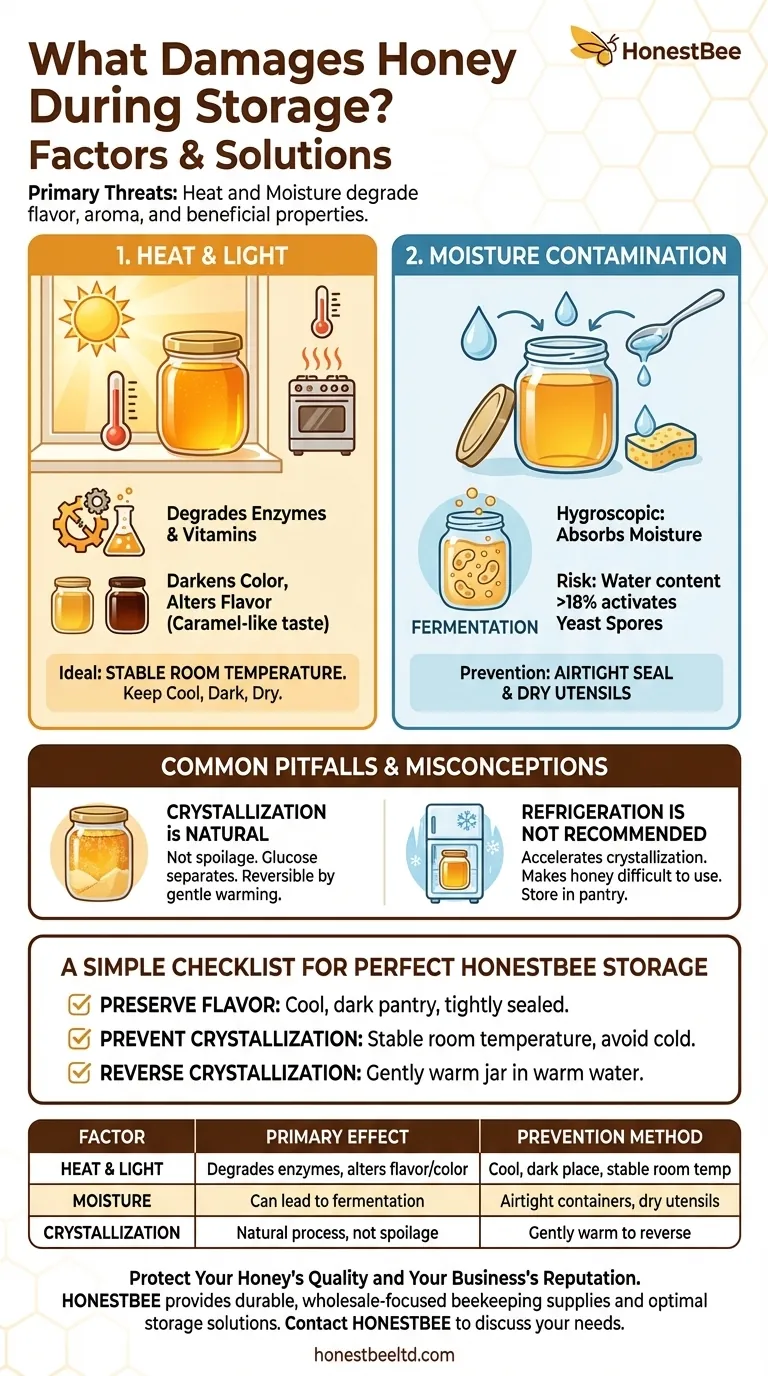
Related Products
- Inverted Squeezable Honey Jar with No Drip Flip Top Cap for Easy Pouring
- Food Grade Plastic Honey Bucket Pail for Beekeeping
- Classic Drum Shaped Glass Honey Jar with Airtight Lid
- Plastic Honey Gate Spout with Wing Nut for Beekeeping Honey Bucket
- Natural Wood Honey Dipper for Tea Coffee and Desserts
People Also Ask
- How long to let honey settle before bottling? Achieve Crystal-Clear Honey for a Premium Product
- What is done with the honey after extraction and filtering? From Purification to Perfect Packaging
- What are the benefits of using glass jars for honey packaging? Preserve Flavor & Elevate Your Brand
- What factors should be considered when choosing honey packaging? Optimize for Brand, Operations & Market
- Can honey go bad in the heat? Protect Your Honey's Quality and Flavor






